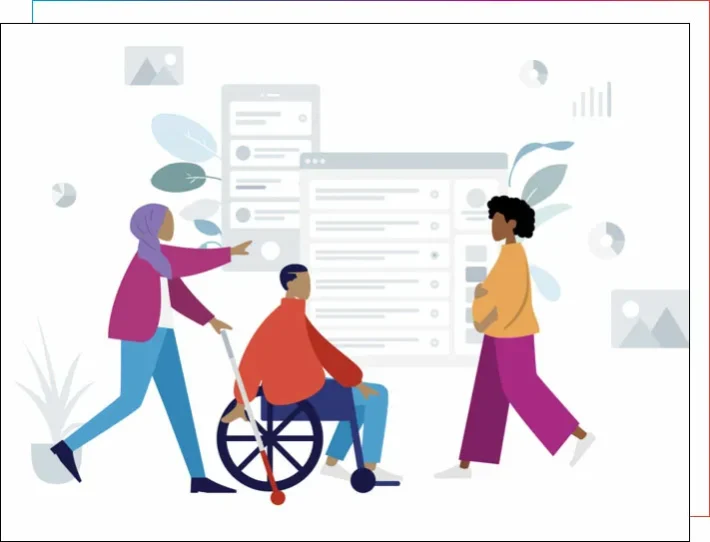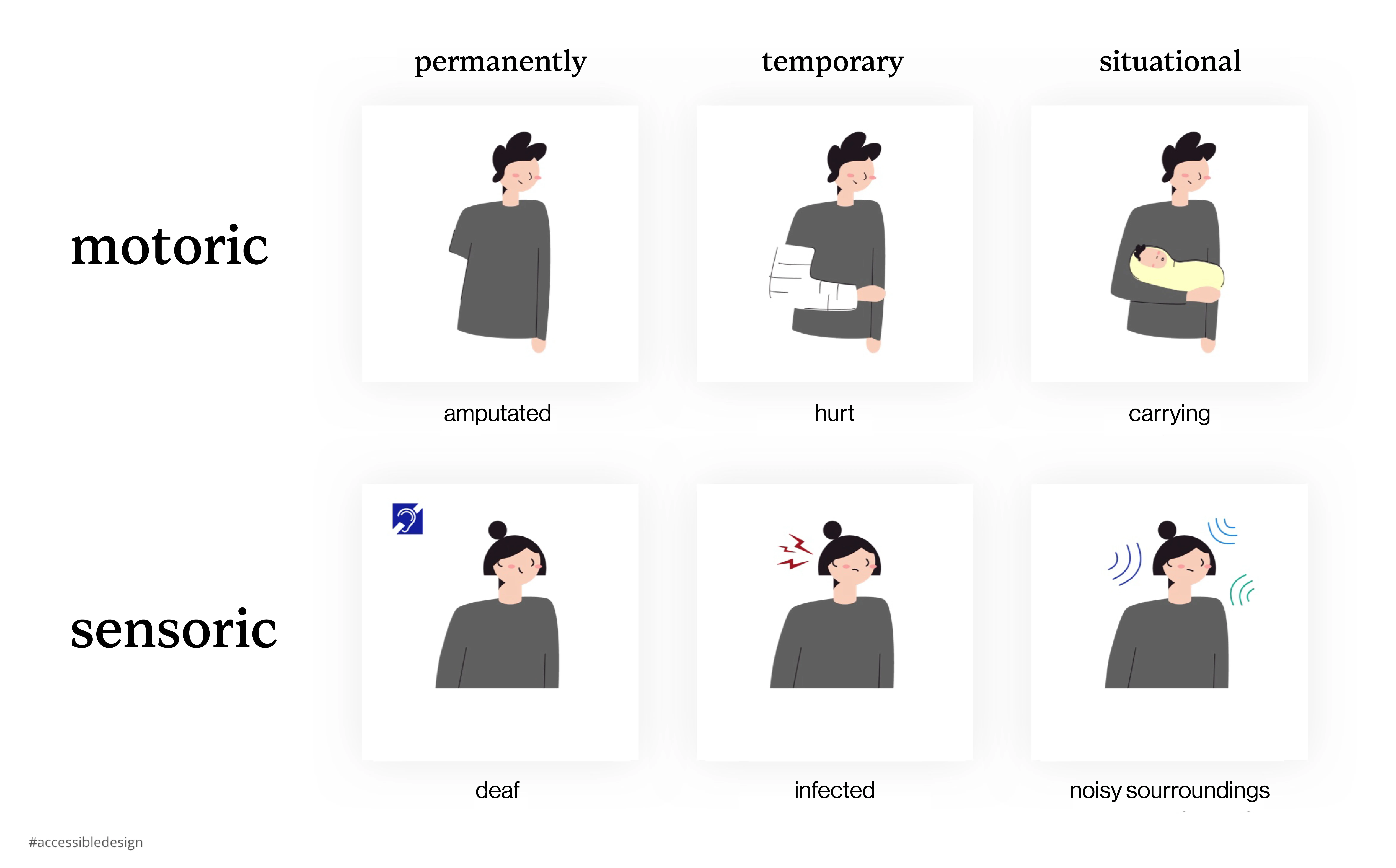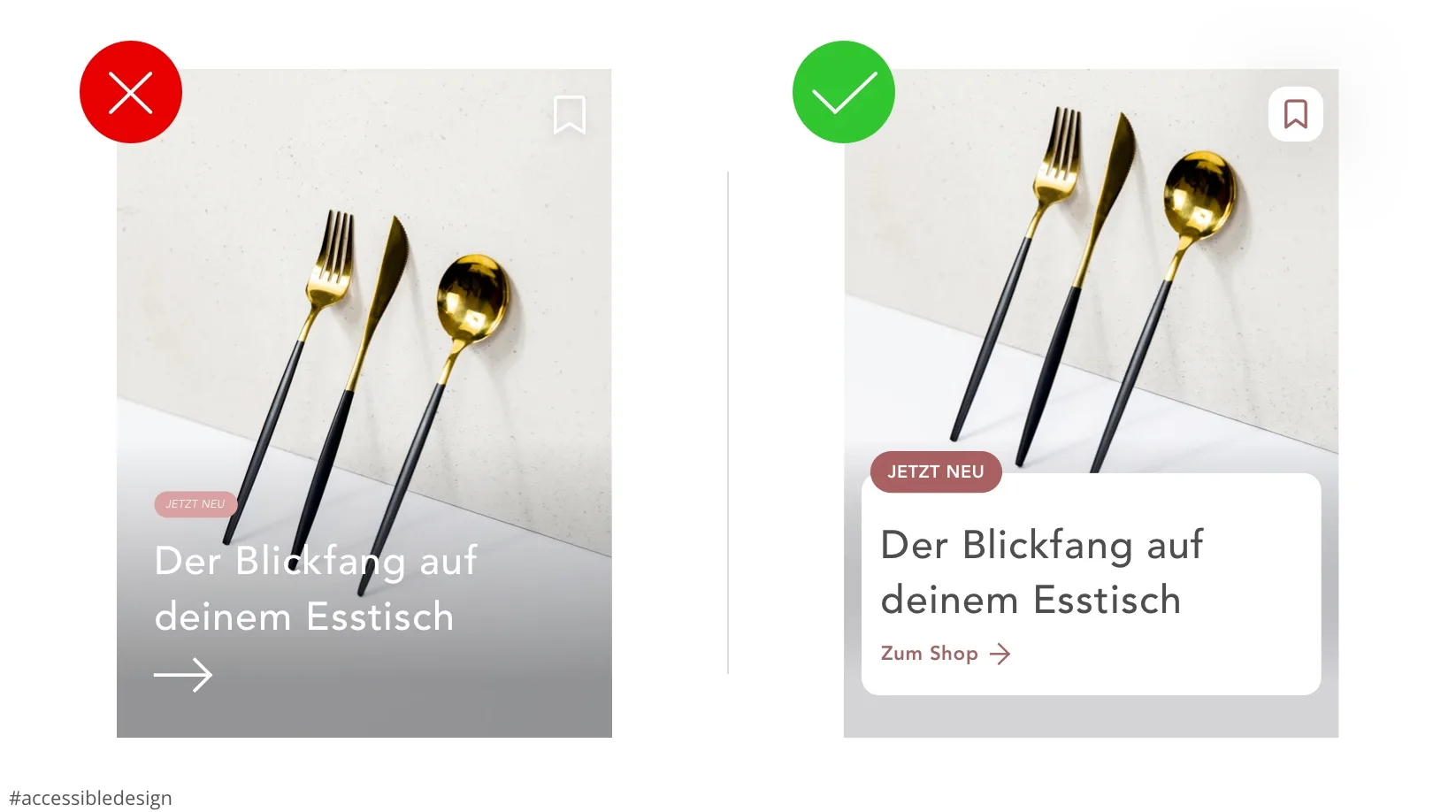Creation
Accessible should be the new normal
The internet, apps, websites and digital services are no longer a novelty, let alone a privilege. They are an essential aspect of our lives, particularly during the era of COVID-19, New Work and digital nomads. We quickly got used to the majority of our life taking place online and managing important things in the digital world – from working to banking. Now, children are even taught on screens.

As designers and commissioners of new (digital) products, we carry a special responsibility for designing products to be used by people from every part of society, in all living situations, including people with health or physical limitations. Put simply, digital products need to work for everyone. You’re probably nodding your head in agreement. But as real world experience shows, ‘People first’ and human (user) centered design continues to cater to normative, neurotypical people and to overlook those who have any form of physical impairment or are otherwise capable. These products fail to fulfil the needs of their users. Far from providing a solution, they act as an obstacle.
Does accessibility only benefit people with disabilities?
Not by a long shot. Even people with situational or temporary limitations can benefit from accessibility. Ever tried juggling carrying a child or your weekly shop why using your phone in the other hand? Not so easy, right? Or tried to find a destination on your phone while driving? (Not a great example, as we all know this is illegal…) Or struggled to understand complicated wording on an application or website? And the classic one: Leaving your reading glasses at home and wanting to take a quick look at something on your device. Well, we all know how that ends… One time or another, we’ve all experienced something similar. In these cases, limitations imposed by badly designed products can create obstacles, ruining our day. Regardless of whether these limitations are temporary or permanent. The Web Content Accessibility Guidelines (WCAG link) are there to help.

Example for motor and sensory limitations (from left to right):
Amputations, broken bones, physical strain; deafness, inflammation or tinnitus
Accessibility doesn’t just involve design. It also affects text. The wording of content can sometimes be so complicated that users aren’t able to fully understand it – either due to a lack of language skills, mental disabilities or situational circumstances. As a result, customers may not be able to order a product, or use it incorrectly, miss opportunities or even face legal consequences. Straightforward text content avoids misunderstandings and gives people access to relevant information.
Our role is to make digital products more inclusive. We want to break down barriers, not build them.
In large corporations, accessibility is already a key element of product development and included in corporate strategy. However, the concept and its relevance is yet to reach many smaller firms. While they may grasp that websites for hospitals and public institutions need to be accessible, they often fail to see the need for accessibility among technical SMEs or small businesses in the local area. While a product designed for people should work for everyone, plenty of applications and website are simply unusable for many people. This primarily concerns companies that aren’t global players. In other words, the majority. But why?
The following stumbling blocks often stop an inclusive product in its tracks during the initial project stages:
- Target group descriptions, personas, etc. that overlook health impairments
- he belief that the website will only be used by healthy, fully focused people with ideal life circumstances.
- The preconception that accessibility costs more during the development stage
- The belief that only people with health impairments benefit from accessibility
- Use cases that ignore scenarios involving restricted use
- Prioritising aesthetic and image above usability and user experience
Try to avoid these pitfalls and give accessibility a leading role in your projects from the word go. At the end of the day, every single user counts towards your success.
The key takeaway from this article probably also comes as the biggest shock: An accessible website always has better usability than a non-accessible website. Inclusive design is only ever an advantage. Being aware of accessibility can also help you boost your customer experience in general.
But first things first. Let’s quickly wrap up what we’ve covered above by taking a look at stumbling blocks, preconceptions and benefits to inclusion and accessibility:
- Reaching more people: At its core, accessibility is about satisfying as many user groups as possible, not just as many as necessary. #1
- Long-term cost savings: Designing a website or app to be accessible from the outset doesn’t cost any more money than an 'exclusive’ product. However, redesigning an existing website or app to make it more inclusive will always cost time and money.
- Improve your design: There's nothing stopping accessible websites from being just as aesthetic as ‘standard’ ones. Most of the Web Content Accessibility Guidelines focus on cleaner content management and code structure – not design. The guidelines that do address UI and design tend to only improve it. They focus on critical control features on a website, like the contrast ratio of the background to foreground and clear interaction indicators like hover effects and feedback, etc. You can find a positive example here:

Benefit across the board by designing and launching accessible services, products and applications. In this way, you’ll help make the world a more inclusive place and make your own life easier. There’s no need to juggle shopping bags or struggle with multitasking anymore.

Eileen is an art director at port-neo in Stuttgart. Specialising in UX design, her work involves creating eye-catching user experiences and interfaces for websites and apps. With a keen eye for trends and innovations, she keeps our customers in line with the times.
